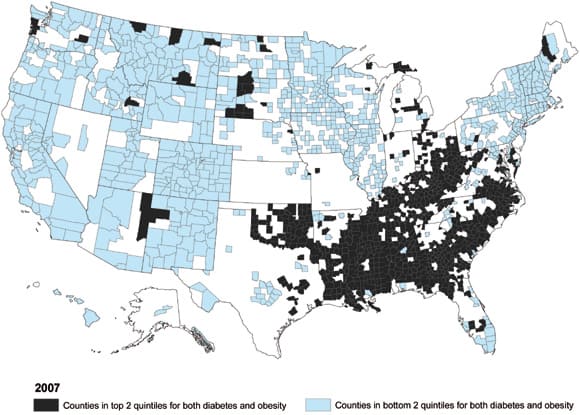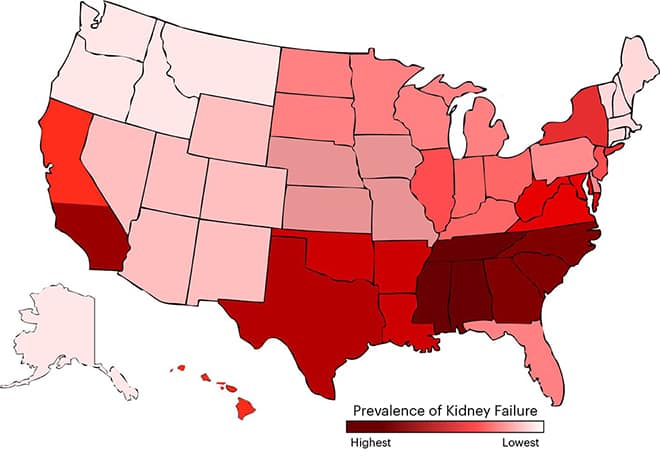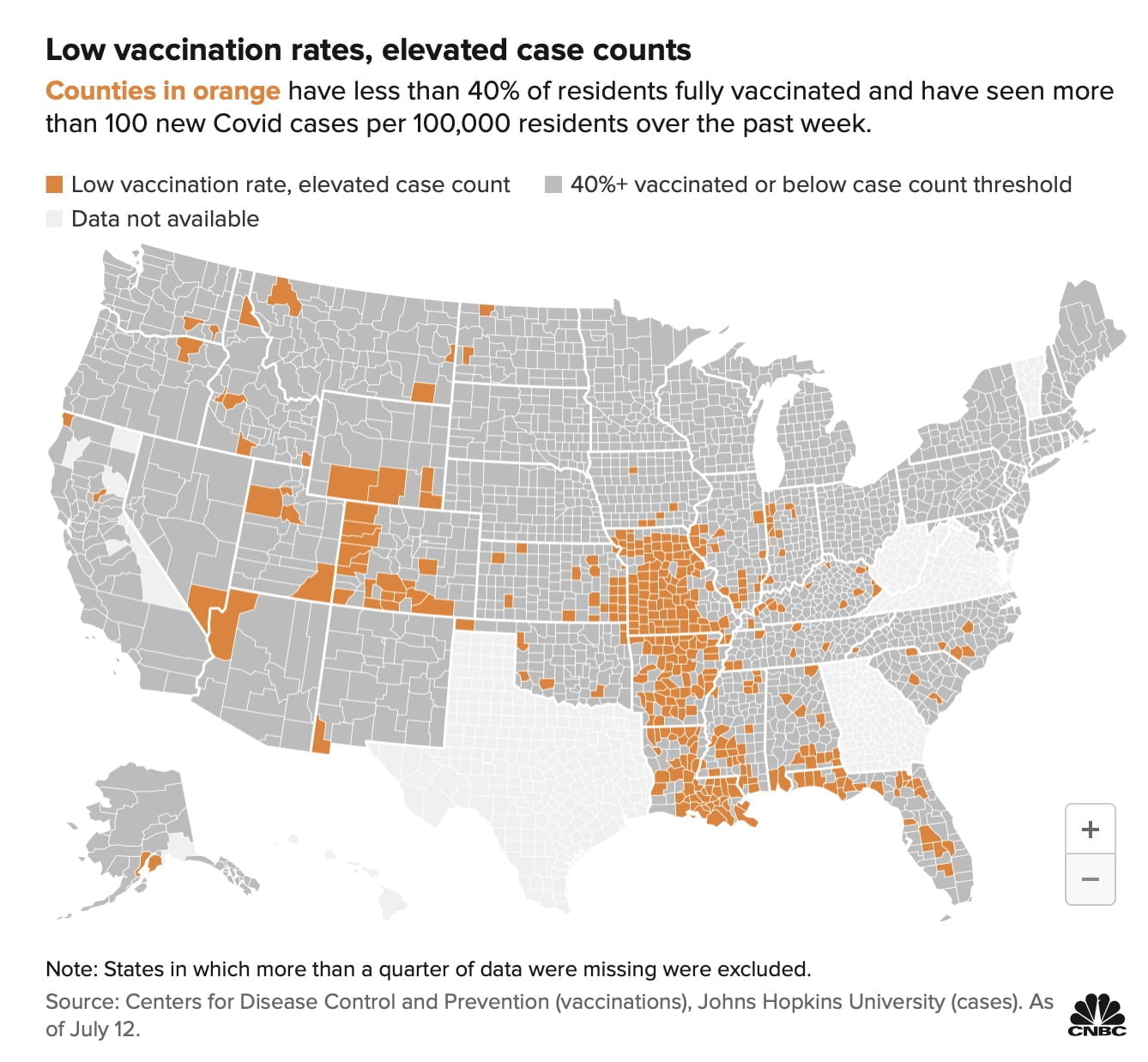Back in 2017, I wrote what turned out to be quite the prescient blog post: Trend: The Emerging Healthcare Reality Crisis.
Here’s what I wrote:
Clearly there are vast sections of the population today who do not believe in science. They don’t believe in facts. They don’t believe in much other than what they want to believe in.
Their belief system will increasingly drive their attitude and understanding of their healthcare circumstances.
Going forward, this new reality will prove to be a tremendous challenge for the healthcare system.
Check a few of the maps – and the political perspective. They line up.


The post took a look at the increasing prevalence of lifestyle diseases – diabetes, hypertension, obesity – and linked it to a particular political trend. It turns out that the maps which correlated perfectly, also line up quite precisely to those regions in the US which are showing extremely low vaccine uptake.

The states? Arkansas, Mississippi, Louisiana, Oklahoma, Alabama …. all pretty far right on the political spectrum.
I often try to keep my political viewpoints in check with what I post, but I must say, as a guy of science, that I am particularly loath to call it ‘hesitancy’ – I much prefer the wording ‘idiocy.’
But with that in mind, I’ve been thinking long and hard about what this means in the long term as a trend. I’ve had a few angry tweets about this after a recent manufacturing podcast had me talking about it, but that is to be expected in this day and age: those who don’t like a realistic trend, attack the trend.
The thing is, there are real economic implications to this type of regional reality. I’ve keynoted many economic development groups over the years, such as the Nevada Economic Development Association; business relocation groups such as CoreNet, and the Industrial Asset Management Council (who represent the Fortune 1000 companies making major factory investment decisions), and many other groups. All of these talks have examined what it takes to accelerate a region into the future – aligning to trends, building an environment and infrastructure supportive of economic growth, and more.
With that in mind, here’s what I think will happen:
- overtime, these regions see a significant increase in healthcare costs. Long-covid, the phrase used to describe the long-term impact of those who fall prey to the disease but survive, face a very difficult – and costly – path forward. It’s expensive
- since these regions were already suffering excessive healthcare costs as a result of these lifestyle diseases, this comes on top of an already strained healthcare system. It makes it worse going forward
- healthcare workers themselves will be hesitant to include such regions on their list of potential recruitment locations – what doctor wants to go to work in a region in which a majority of people think that healthcare science is a fake thing?
- other professional workers drop such regions from their list of future locations to establish a living. Who wants to raise a young family in an area that has a built-in, systemic failure at work?
- conferences, trade shows, meetings and events will be hit, as associations, trade groups and large scale conference organizers drop these regions form their list for the future
- future economic opportunity will likely be scaled back – regions will low vaccine rates, and hence the likelihood of unreliable workforces hobbled by ongoing healthcare issues – will be less attractive to companies seeking to locate new facilities, whether it be head office locations, manufacturing facilities, logistics operations or other
- the brand image of such a region as a place for business investment going forward takes a major hit – “We’re full of crazy people, build your business here!” is not much of a draw
- accelerated business volatility – uncertainty from so many different perspectives, as political agendas come to twist and turn and challenge and deviate any sense of economic reliability going forward
- reduced government revenue as a result of these economic drawbacks, which makes less money available for healthcare, infrastructure, and other critical investment, which causes an ongoing vicious circle
- these regions, which were already on the edge of sanity, fall further into the abyss of widespread mental illness, accelerating their instability and outlook
It’s pretty clear that the trend we will see in the future is that science denialism carries a price.
I spoke about this issue in this recent manufacturing podcast – and it was interesting, in that this particular issue REALLY drew the attention of the two fellows interviewing me.
The reality, sometimes, hurts.




GET IN TOUCH
Jim's Facebook page
You'll find Jim's latest videos on Youtube
Mastodon. What's on Jim's mind? Check his feed!
LinkedIn - reach out to Jim for a professional connection!
Flickr! Get inspired! A massive archive of all of Jim's daily inspirational quotes!
Instagram - the home for Jim's motivational mind!